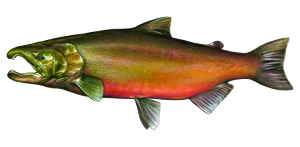Stanley Marsh Wetland Restoration and Induced Beaver Partnership Project
Goals
Goals of this project are to:
- Restore historical 20+acre wetland/marsh near the Necanicum River estuary (via Neawanna Creek) critical for juvenile salmon and trout by re-establishing natural habitat features - including beavers - that will capture lateral and laminar flows, re-inundate the project site, drown and crowd out invasive vegetation, and re-create the giant juvenile fish nursery that was lost when site was filled and planted for pasture land. Beavers, when healthy and happy with wood to use, will dam flows pushing water sideways and across landscapes rather than straight downhill, creating fish-friendly habitat, especially for juveniles.
- Demonstrate the vast restorative potential of healthy beaver populations and passive restoration, including in urban interface areas once thought "too far gone" or expensive to restore
This site had once been a giant wetland nursery and smorgasbord for the Necanicum River's juvenile salmon and trout - mostly coho and cutthroat - to feed and rear safe from predators and storm events before making their journey to the estuary and open ocean. The site was acquired several years ago by the North Coast Land Conservancy. We know that survival to adulthood and returning to spawn - particularly for coho - is tied closely to size and condition as smolts before transitioning to salt water, and smolts that rear in these alcoves, wetlands and marshes off the main river channel survive better and grown larger than mainstem-reared smolts. Restoring these areas means more wild adults coming back; more wild adults means better fishing, more wild spawning, more nutrients to the ecosystem when spawning is over, a healthier river and healthier wild fish.
Tactics
- Create habitats hospitable to attract local beaver populations, meaning ample plants, wood and water. Native wetland plants, shrubs and trees were planted throughout. Beaver and elk exclosures used strategically to allow establishment of vegetation.
- Establish local TU chapter (Tualatin Valley TU) as one of the main partners and stewards. We have held several work parties at the site in close conjunction with North Coast Land Conservancy.
- Encourage re-indundation of project site and re-vegetation with native plant species to drown and crowd out invasive reed canary grass, Himalayan blackberry, and others.
- Utilize these and other "passive restoration" techniques to work within natural processes and parameters to allow site to heal itself, keeping costs and human footprint remarkably low.
Victories
- Beaver activity began almost immediately
- Within the first year, entire project site was wet year-round, where it had been completely dry and dominated by invasive vegetation
- Transition to native-dominated vegetation already underway; invasives like reed canary grass beginning to die out
- Project is on edge of housing development and within the urban interface of the City of Seaside. Many local residents who have watched transition, many suspicious at first, have become its biggest fans. Positive media coverage in local news and TV.
- Another feather in the cap for Tualatin Valley TU, which "adopted" Necanicum watershed in 2008
Staff Contact
Alan Moore - TU Northwest Director of Habitat Programs
Author of this Page
Alan Moore - TU Northwest Director of Habitat Programs


